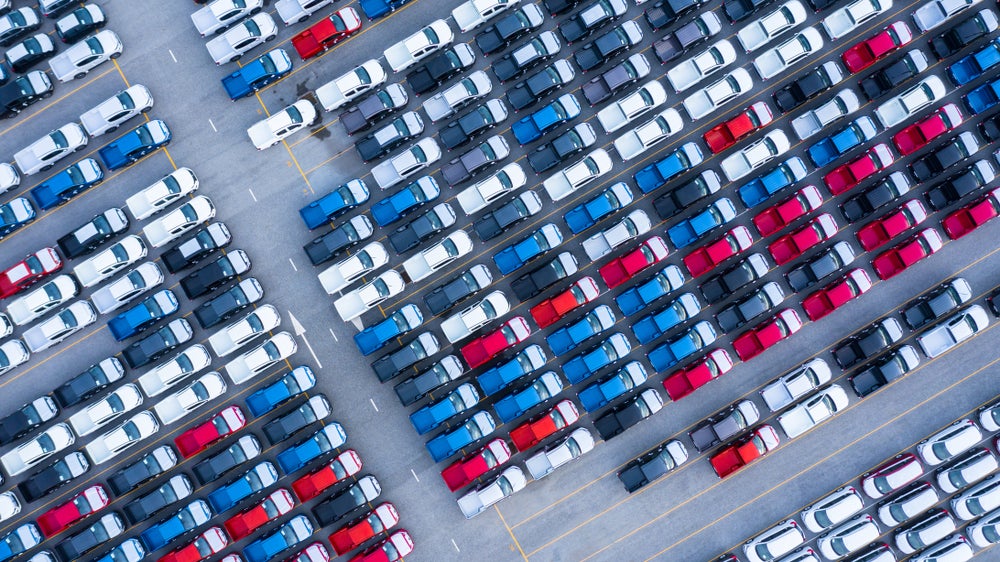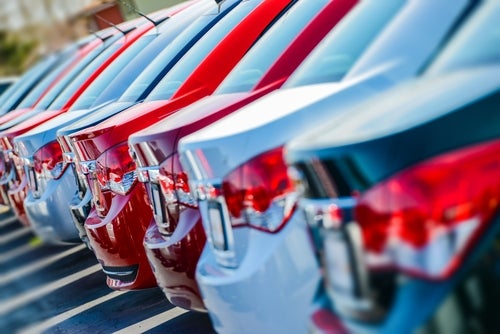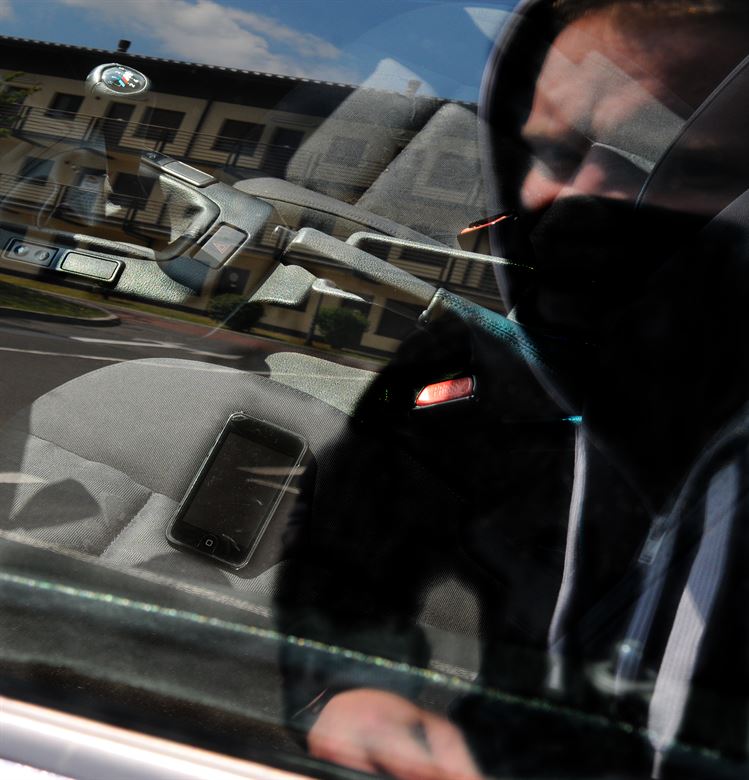Steve Moody finds how leasing firms are
coping with the green agenda during an economic
downturn
As the recession hit hard, many business sectors were concerned
that the green project had been derailed, with survival and cost
cutting the boardroom’s preoccupation. Saving the world could wait
until they saved themselves.
But in the fleet industry, the momentum of the move
to low carbon vehicles has barely slowed, because cost cutting and
greener vehicles go hand-in-hand. Cheaper cars and vans use less
fuel, and cost less in tax. And for many leasing firms, selling the
green dream to customers is about the only game in town, because it
pervades all areas of their customer relationships: vehicle supply,
operational costs, consultancy and defleeting.
If anything, the recession has accelerated the
greening of the UK’s fleet, and the rate of change towards lower
carbon vehicles shows no sign of abating, according to the British
Vehicle Rental and Leasing Association.
In 2007 the average CO2 and mileages for contracts
signed was 157.4 g/km of CO2 and 21,643 miles. In 2008, the drop
was marked: 149.9 g/km of CO2 and 19,617 miles. Part of the reason
is improved technology in vehicles, and part is down to the
recognition of customers that greener cars are cheaper cars.
ALD Automotive marketing director David Yates says:
“Vehicle manufacturers are increasingly using cutting-edge
technology that combine weight-saving measures, vehicle downsizing
and enhanced aerodynamics, among others, to bring to the
marketplace cars that benefit from significantly enhanced economy
and reduced emissions. We are seeing a concerted drive towards
low-emission models that, in many cases, sees the increasing
take-up of smaller models, but without any loss of
performance.”
How well do you really know your competitors?
Access the most comprehensive Company Profiles on the market, powered by GlobalData. Save hours of research. Gain competitive edge.

Thank you!
Your download email will arrive shortly
Not ready to buy yet? Download a free sample
We are confident about the unique quality of our Company Profiles. However, we want you to make the most beneficial decision for your business, so we offer a free sample that you can download by submitting the below form
By GlobalDataBack in 2003, when ALD Automotive began recording
data on the subject, the average company car had a 124bhp 1,914cc
engine and pumped out 167g/km of CO2. By 2009, the average size had
dropped to 1,786cc and CO2 to 146g/km, yet power had stayed the
same.
Total cost of ownership
The wholelife costs argument for going
green and saving money looks strong too, not only for customers but
for leasing fleets purchasing the vehicles, due to the corporation
tax incentive for writing down the depreciation of cars with sub
160g/km at a much faster rate than those above.
At the moment there appears to be little negative
impact to selling customers the green dream, and almost all
manufacturers and leasing companies are reporting strong demand for
low emission models. Indeed, all evidence from the residual value
guides analysts shows a correlation between the strength of used
prices and the level of fuel consumption.
Terry Bartlett, managing director at Inchcape Fleet
Solutions, says the firm has recorded a noticeable drop in vehicle
orders for higher value CO2 vehicles, and that this trend will
carry over in to the used sector.
He say: “Our forward order profile reflects a 14.2
percent drop in demand for vehicles with CO2 in excess of 160g/km
and average CO2 emissions of vehicles ordered this year has fallen
to 145g/km. With the corporate market firmly focused on the 160g/km
benchmark there is reason to expect that residual values on higher
emissions cars will be reduced as the second user market adapts to
the more eco-friendly alternatives developed by the manufacturers
to meet demand from the fleet sector.”
Real residual benefits?
But defleeting low-emission cars is not
necessarily going to be the easy and strong revenue stream many
expect. The proliferation of green sub brands such as
BlueEfficiency, Bluemotion, EcoMotive, and EfficientDynamics has
created a distinct marker that can serve as shorthand for used
buyers that the vehicle in front of them is more efficient than
others without the moniker.
The battle then will be to educate customers about
what green technology is contained within the car, and at what
point in the emissions curve this vehicle was produced – for
example early DRIVe Volvos come without stop-start technology while
later ones are fitted with it, and so are more efficient.
Martin Ward, manufacturer relationship manager at
CAP, says there are grounds for confusion. And in the used market,
confusion breeds lower prices.
He explains: “Take the Passat Bluemotion as an
example – it can also be a Bluemotion2 with Stop/Start, but no
extra badging on it to say what it is.”
EurotaxGlass’s forecasting editor Jason King says
the manufacturers need to turn the green models from sub-brands
into range-wide offerings:
“It’s all very confusing now, and although the pace
of change is impressive, it will eventually weaken the sub-brand
that they have created,” King adds. “As an example, as soon all
Volkswagen products get Bluemotion technology, as per BMW
EfficientDynamics, the clearer it will be.”
BVRLA chief executive John Lewis says that
ultra-low CO2 vehicles such as plug-in hybrid and electric cars and
vans have a future in fleet, but there are still issues around
wholelife costs.
He says: “In the medium term, we expect to see
ultra-low carbon vehicles start to be leased by our members. We
need to identify the practical applications for these new vehicles
and leverage the government incentives available into the fleet
sector.
“Setting residual values is a problem because there
is no precedent for reselling vehicles of this type and there is
very little fleet experience in managing battery technology.
However, the fleet and leasing industries need to play their part
in creating wider acceptance.”
Operational process
changes
As companies look to run ultra-low carbon
vehicles, many leasing companies may have to look at the current,
established ways of doing things, and adopt new funding methods,
and ways of delivering mobility solutions.
A new approach to fleet management that is centred
on operational and funding flexibility is likely to be the major
fleet management trend of the next decade, according to CFC
Solutions.
Neville Briggs, CFC managing director, says:
“Fleets are likely to use not just three- or four-year standard
leases or outright purchase but also make more use of medium-term
leasing, daily rental and grey fleet options.”
In order to be able to use the type of vehicle for
the job – after all, there is no point giving an employee an
electric vehicle for high-mileage work, but there may be some
urban, short-trip job need that could utilise one. In that case,
leasing firms will have to become more nimble.
Lorraine Farnon, UK sales director for Europcar UK
Group, says: “For businesses running a fleet of vehicles,
environmental concerns can often seem impossible to resolve. But
this does not have to be the case.
“Challenging times drive innovation and that can
only benefit our customers and the industry. Being flexible to meet
customer demands is critical. That’s where vehicle rental as a
pay-as-you-go option, to help businesses meet their environmental
objectives, cannot be underestimated.”
Driver attitudes change
Leasing and fleet management company
LeasePlan recently surveyed 600 office workers under the age of 35,
and found 8 out of 10 thought the CO2 emissions level of their
company car was important.
David Brennan, managing director of LeasePlan UK,
says of the research: “Doing business in today’s carbon-conscious
environment means adopting methods that take drivers’ views into
account. There is no doubt driver concern over CO2 levels will only
increase in time.
“It is why we developed our GreenPlan product,
giving drivers and companies the ability to save money and lower
emissions.”
What LeasePlan offers with GreenPlan is a raft of
measures intended to enhance the environmental and financial
performance of a customer’s fleet, including offsetting vehicle
emissions via a managed reforestation programme, driver training,
improved journey planning and advice when choosing vehicles.
Brennan adds: “All leasing companies need to
continue to develop meaningful green initiatives that will meet the
demands of business to reduce cost and carbon footprint.”
Hitachi Capital Vehicle Solutions has realised that
being a provider of lower CO2 vehicles is only one part of the
green project. Increasingly customers are looking for their
suppliers to limit their environmental impact too.
It is becoming an increasingly regular question
during the tendering process: “So you can supply us with lower CO2
cars, but what are you doing about your own carbon footprint?”
Consequently it started working towards achieving
the environmental standard ISO 14001 at the end of 2008.
Neil Hayward, human resources and business
improvement manager, says: “In the past, we found that customers
treated green credentials as a ‘nice-to-have’ from suppliers. Now,
it is essential, particularly among public sector customers.”
Green agenda downplayed?
However, Simon West-Oliver, the sales and
marketing director at fleet management company DRIVE, says the
green agenda is no longer all-pervasive, and will only be
considered if it goes hand-in-hand with savings.
He says: “One potential victim of corporate caution
is the green agenda, perhaps too readily perceived as an expensive
nicety when many businesses are counting every penny to survive.
Our perception is many companies are focusing on what they see as
the core risk issues in the fleet business and are moving away from
a true green strategy.”
Not surprisingly, seeing as the firm offers
software and telemetry to manage a fleet, West-Oliver believes the
only way to truly bring the elements together is by measuring and
understanding the relationship between risk, cost and the
environment.
The green argument cannot be won if the case for
savings, or even a cost-neutral position cannot be made. Otherwise
only a few companies with a rather evangelical approach to the
environment will fully embrace it, and the rest will only fiddle
around at the edges.
Often, understanding the size of a carbon footprint
and its financial implications can be difficult to grasp. The CO2
emissions or MPG of a car are easy to see in black and white, but
collating all the data, and applying all the various fiscal
incentives to find out how much cheaper the fleet could be to run
can be extremely complex.
CLM Fleet Management has developed a ‘carbon
calculator’ to show fleet operators exactly the extent of the
carbon emissions their fleet produces and the financial benefits
achievable from reducing them.
Indeed, with one firm, CLM was able to demonstrate
the fleet collectively produced some 408 tonnes of CO2 , and
travelled on average 20,600 miles per car annually, with average
CO2 emissions of 169g/km per vehicle.
Having measured this, it could then apply all the
various tax regimes for both company and its drivers, and wholelife
costings, to illustrate that by having a greener fleet, the firm
could make significant savings.
Eyes in the sky
One of the areas leasing firms and
suppliers of fleets may be able to add value, reduce emissions and
crucially make some more money is through the selling of other
services such as telematics. Already a number of leasing companies
have got together with telematic providers to offer tracking.
Telematics firm Tracker recently carried out a
customer survey which found 60 percent of customers used its
Reporter system to drive improvements in efficiency, making cost
and fuel savings.
ProFleet2, ALD Automotive’s telematics system, has
already been fitted to over 19,000 of its fleet and the firm sees
it as an opportunity for customers to use its to reduce fuel
consumption.
Marketing director David Yates notes: “It allows
fleet managers to access a unique reporting suite of duty of care
indicators and driver profiling, which can also highlight heavy
acceleration, heavy braking, excessive speeds and excessive idling,
all major contributors to high fuel costs.
“Whilst ProFleet2, by itself, can not reduce costs,
our reporting provides all the information required to help
customers make quick, informed decisions that manage such issues,
allowing them to identify their significance and respond
appropriately.”
Phil Moorhouse, managing director of Northgate
Vehicle Hire, which operates a fleet of more than 65,000 vehicles,
has found the economic slowdown has prompted an increasing number
of fleet decision-makers to focus on cost control, and the take-up
in Northgate’s Vehicle Monitoring technology, which enables
businesses to slash bills and improve business efficiency to the
benefit of customers, has been marked.
He says: “Interest in Vehicle Monitoring has been
phenomenal in recent months and an ever-increasing number of
businesses are reaping the benefits of our investment in the
technology.”
It shows that when things are good, many companies
are happy to just go along with the status quo, and not question
such prosaic areas as fleet operational efficiency.
But when business gets tougher, they start to look
at all aspects of their cost base, and also for ways of gaining
advantage – which gives leasing companies the chance to sell in
incremental extras on top of the vehicle, such as telematics, or to
add value: If you can show a customer they have saved money by
utilising your help, it makes a compelling case for retention come
re-tendering time.
Helping customer implement driver education
programmes might not be a huge new stream of revenue, but is one
such example. Robert Kingdom, head of marketing at Masterlease is
confident if you get the driver on board with reducing emissions,
there are savings to be made.
He says: “‘Driving the Driver’ should become the
new mantra for corporates with large fleets seeking to cut carbon
and costs. This is based upon encouraging the right behaviours for
the right reasons to get the right results.
“It is an engagement, empowerment and educational
journey that can save UK plc millions of pounds in less wear and
tear on the vehicles, fewer at-fault accidents, reduced fuel and
emissions, and greater residual value for the car at the end of its
lease life.”
Kingdom believes that making relatively easily
implemented, cost-negligible approaches, such as driver clinics or
offering incentive programmes as part of a cost-awareness mindset,
can result in significant overall savings.
Fortunately for the fleet industry, with
manufacturers constantly pushing CO2 levels down, going green and
making savings are inextricably linked, and with continuing
enthusiasm from customers, it seems that selling the green dream is
a business area that you can’t lose from being in, even in a
recession.







